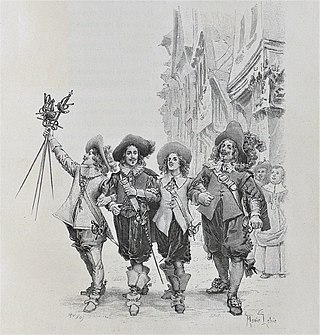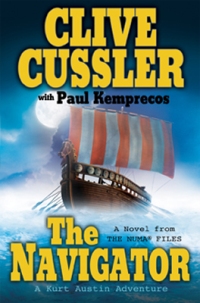Plot
Edgar Freemantle, a wealthy Minnesotan building contractor, barely survives a severe worksite accident wherein his truck is crushed by a crane. Edgar loses his right arm while suffering severe head injuries impairing his speech, vision, and memory. During his long recovery, he experiences suicidal thoughts and violent, abusive mood swings, spurring his wife to file for divorce.
On the advice of his psychologist, Dr. Kamen, Edgar relocates southward and rents a beach house on the island of Duma Key, off the Florida coast. Kamen further advises Edgar to rekindle his onetime sketching hobby as a restorative. Edgar retains local college student Jack Cantori as a part-time personal assistant. Soon after, he meets and befriends the island's other full-time residents, octogenarian heiress Elizabeth Eastlake (sufferer of final-stage dementia, whose family trust owns most of the island) and her live-in attendant, Jerome Wireman, himself a once-gifted attorney whose wife and daughter's tragic deaths led him to (unsuccessfully) attempt suicide via gunshot wound.
Decades-old paranormal phenomena revisit Duma Key as Edgar delves obsessively into his art, lapsing into a semi-conscious haze; his artwork captures psychic visions, revealing his ex-wife's affair, his friend's suicidal depression and his younger daughter Ilse's fleeting marital engagement. Later, Edgar uses his newfound artistic powers to manipulate the outside world, healing Jerome's degenerating neurological condition and suffocating a child murderer in his jail cell. When Ilse visits the island, she and Edgar drive to a disused, overgrown area where colors seem unnaturally vivid, and Ilse becomes violently ill. Elizabeth warns Edgar that Duma Key "has never been a lucky place for daughters" and that his paintings must be sold to multiple geographically distant buyers, lest their otherworldly power grow too concentrated or dangerous.
Freemantle comes to learn that his beach house has hosted many successful artists, including Elizabeth, during its eighty-year existence. Edgar and Jerome manifest pronounced psychic talents while on or near the island, seemingly stemming from their debilitating brain injuries. Edgar's art becomes more vivid and distressing, featuring ship-and-seaside compositions whose vessel and mysterious, red-cloaked passenger draw nearer to shore in each successive painting. Elizabeth grows alternately lucid then incoherent as her dementia worsens, scattering her beloved china figurines, murmuring that, "The table is leaking", and repeatedly urging Jerome to throw one faceless figurine into her koi pond. In a moment of chilling clarity, Elizabeth asks Edgar if he has begun painting the ship yet.
After Edgar's paintings attract statewide acclaim, he hosts an art exhibition and accompanying lecture at an upscale Sarasota gallery, gaining a devoted audience (including Edgar's visiting loved ones) and yielding half a million in sales. Elizabeth makes a rare appearance at said exhibition; upon seeing his ship-and-seaside paintings, she reacts violently, making cryptic references and warnings, before suffering an incapacitating (and ultimately fatal) stroke. Edgar notices previously-unseen details in his work: the ship's rotting sails, children toys littering its decks, screaming faces hiding in its foamy wake.
Narrative timelines interweave as Edgar's present-day ordeal parallels the tragedy which befell the Eastlake family in 1927. Young Elizabeth, suffering a head-wound in a horse carriage accident, turns to sketching as a means of recuperation. An outside presence—"Perse"—speaks to her, sometimes in her mind or sometimes through her rag-doll, filling her with knowledge, reality-altering powers and a gradual infiltration of sinister urges. Elizabeth directs her bootlegger father to a pile of ship debris in the shallows, unearthing a red-cloaked porcelain figurine. Her sketches grow progressively more malevolent, until, driven by fear, she rebels against Perse, provoking the entity's wrath. As an act of retaliation, Elizabeth's twin sisters are lured into the ocean to drown. Only her nursemaid, Melda, takes direct action; as Perse's drowned-sister things move beachward, the governess holds them off by means of silver jewelry, buying precious moments with her life while Elizabeth neutralizes the Perse statuette.
Edgar faces similar otherworldly dangers while unraveling the Eastlake mystery. He returns home to find "Where our sister?" childishly scrawled on an unused canvas. He then discovers that those in possession of his artworks either die or are possessed and driven into murderous deeds by Perse. He persuades his loved ones to discard their paintings, but not before a co-opted art critic drowns Ilse. As Edgar, Jack and Jerome race to discover the secret of Perse, the ghost ship's undead passengers return for them. Fighting their way to Duma Key's overgrown region—Heron's Roost, the original Eastlake manor—the trio locate the Perse-carving, sealed in a salt water-filled ceramic keg of whiskey, in which a crack has formed during the passage of years. Knowing Perse needs fresh water to rest, Edgar returns the figurine to a freshwater source and faces down one Perse's final temptation, wearing Ilse's face. He and Jerome fly to Minnesota and drop the statuette into Lake Phalen's freshwater depths, where it can forever sleep undisturbed.
Jerome makes plans to move to Mexico and start a hotel business, proposing that Edgar join him. However, Jerome dies of a heart attack only two months later, before Edgar has a chance to see him again. Edgar then commences his final painting: a massive tropical storm, destroying Duma Key.













